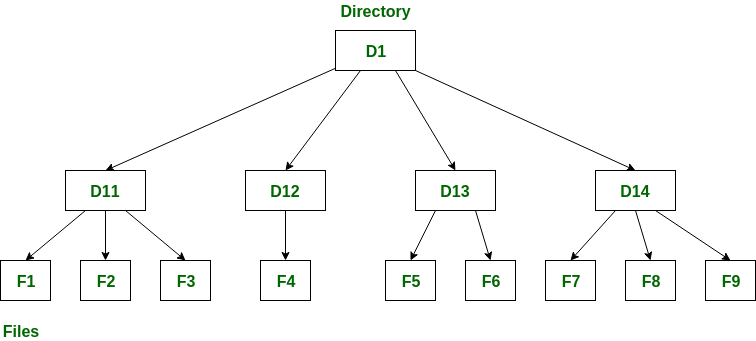Creating an effective website structure is the key to maximizing your SEO efforts. Having a good hierarchy and organization of pages on your website will help search engines understand and index your content more effectively, leading to improved organic rankings and increased visibility.
When planning out your website structure, focus on creating logical pathways for both visitors and search engines. This means that you should always consider how people will navigate your website, and ensure that you provide all the necessary information to search engines.
To start creating a website structure, begin by mapping out the main pages of your site. These are usually referred to as “pillar pages“, and they should serve as the foundation for your content hierarchy. Once you’ve identified the key topics that you want to cover, you can begin to break them down into sub-topics and even further levels.

When creating your website structure, it’s also important to consider the types of content that you’ll create for each page. Generally, it’s best to focus on long-form content with plenty of relevant keywords so that search engines can understand the intent behind each page. This will help your pages rank better and draw more organic traffic to your website.
Once you’ve established a solid hierarchy of pages, it’s important to make sure that they are easily navigable by both users and search engines. This means including internal links between related content as well as optimizing titles, meta descriptions, headings, and other elements for visibility in search results.
What Is Website Structure?
Website structure is the overall hierarchy and organization of a website’s pages, sections, and content elements. A well-structured website should have a logical and intuitive navigation system designed to make it easy for users to find what they are looking for.
At its core, website structure is all about how visitors interact with your site’s content. Ideally, the structure should be designed so that visitors can quickly and easily find what they are looking for. Good website structure also helps search engines understand the purpose of each page, allowing them to index it accordingly.
Why Is Your Website Structure Important?

Having a well-structured website is essential for both SEO and improving the user experience. Search engines rely on a website’s structure to understand how pages are related, so having an optimized hierarchy can help your pages rank better in search results.
Additionally, a good website structure helps visitors find what they’re looking for quickly and easily. This has been proven to improve user engagement and reduce bounce rates, which in turn has a positive impact on SEO.
Top-Down Vs. Bottom-Up Website Structures
One of the most important decisions you’ll have to make when creating your website structure is whether to opt for a top-down or bottom-up approach. With a top-down structure, you start with your main topics and break them down into subtopics as you go. This is ideal for sites that focus on one or two core topics.
On the other hand, a bottom-up structure works best for websites with multiple subtopics. Here, you start by creating pages for the individual topics and then link them together to form an overarching structure.
The 4 Types of Website Structure
When creating your website structure, it helps to consider the type of structure you’d like to use. There are four common types of website structures: linear, hierarchical, web-like, and directory-based.
Linear structures
Linear structrues are ideal for websites that focus on a single topic or product. In a linear structure, there will only be one path to any given page and visitors must navigate through each page in the same order.

Hierarchical structures
Hierarchical structures are similar to linear structures, except that they allow for multiple paths between pages. This type of structure is ideal for sites with lots of content where visitors may need to skip around from page to page.

Web-like structures
Web-like structures offer complete freedom of navigation, allowing visitors to move freely from page to page. This is the ideal structure for sites with lots of interconnected content where users may need to explore a variety of topics at once.

Directory-based structures
Directory-based structures are ideal for e-commerce sites and other websites with lots of products. Here, visitors can browse through a hierarchical directory of items, making it easy to find what they’re looking for quickly.

How to Choose Which Type of Website Structure Is Right for Your Website
Choosing the right type of website structure for your site will depend on several factors, including the size and scope of your content, as well as the overall user experience you want to create. Consider your content carefully before making a decision on which structure is best for your site.
It’s also important to remember that there is no one-size-fits-all solution. Depending on your goals and objectives, you may need to combine different types of structures for the best results. For example, if your site has lots of products you may want to use a combination of hierarchical and directory-based structures.
No matter which structure you choose, remember that it’s important to keep visitors in mind when creating your website. Having an intuitive navigation system will make it easier for visitors to find what they’re looking for, improving user engagement and reducing bounce rates.
Tips for Designing and Developing Your Website Structure
Once you’ve decided which type of structure is best for your website, there are several steps you can take to ensure its success. Here are some tips for designing and developing a well-structured website:
- Start by mapping out the main topics and subtopics that make up your content hierarchy.
- Create an in-depth sitemap, outlining every page on your website and how they are all related.
- Include internal links between related pages to make it easier for visitors to navigate your site.
- Optimize titles, meta descriptions, and headings for visibility in search engine results.
- Test the structure with real users to ensure that everything is intuitive and easy to use.
How to Plan a Website Structure for SEO and User Experience
Designing a website structure that both users and search engines will find appealing requires careful planning. To get started, consider your target audience and what type of content they may be looking for. Then, create an in-depth sitemap to ensure that all pages are linked together logically.
Next, focus on optimizing each page for visibility in search engine results. This includes creating unique titles, meta descriptions, and headings that accurately describe the content. Finally, test your structure with real users to ensure it is easy to use and provides a positive user experience.
By following these steps, you can create a website structure that both SEOs and users will love. A well-structured website will ensure that visitors can find what they’re looking for quickly and easily, while also helping your pages rank better in search results.
Remember to regularly update your website structure as your content grows or changes. Keeping your structure up-to-date ensures that you are getting the most out of it both for users and search engine visibility.
Creating a well-structured website is a crucial part of any successful SEO and digital marketing strategy. By following the steps outlined in this guide, you can create a website structure that both users and search engines will love. With a good website structure, you’ll be well on your way to gaining more organic traffic and improving visibility in search engine results.
Conclusion
Website structure is a key component of any successful SEO and digital marketing strategy. The right type of website structure can help improve user experience, boost search engine visibility, and increase organic traffic. When creating your website structure, keep in mind the type of content you have as well as the user experience you want to create. Remember to optimize titles, meta descriptions, and headings for visibility in search engine results and test your structure with real users to ensure it is easy to use. With a good website structure, you’ll be well on your way to gaining more organic traffic and improving visibility in search engine results.
If you need help creating a website structure that works for both users and SEOs, the team at SEO Traffic Hero would love to help. We have years of experience creating website structures that are both SEO-friendly and user-friendly. Contact us today to find out how we can help your business succeed online!







